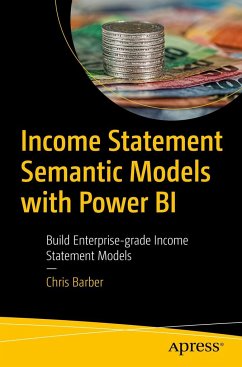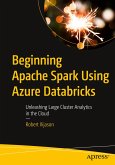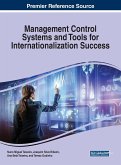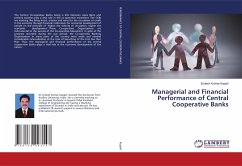This comprehensive guide will teach you how to build an income statement semantic model, also known as the profit and loss (P&L) statement.
Author Chris Barber- a business intelligence (BI) consultant, Microsoft MVP, and chartered accountant (ACMA, CGMA)-helps you master everything from designing conceptual models to building semantic models based on these designs. You will learn how to build a re-usable solution based on the trial balance and how to expand upon this to build enterprise-grade solutions. If you want to leverage the Microsoft BI platform to understand profit within your organization, this is the resource you need.
What You Will Learn
Modeling and the income statement: Learn what modelling the income statement entails, why it is important, and how income statements are constructedCalculating account balances: Learn how to optimally calculate account balances using a Star SchemaProducing external income statement semantic models: Learn how to produce external income statement semantic models as they enable income statements to be analyzed from a range of perspectives and can be explored to reveal the underlying accounts and journal entriesProducing internal income statement semantic models: Learn how to create multiple income statement layouts and further contextualize financial information by including percentages and non-financial information, and learn about the various security and self-service considerations
Who This Book Is For
Technical users (solution architects, Microsoft Fabric developers, Power BI developers) who require a comprehensive methodology for income statement semantic models because of the modeling complexities and knowledge needed of the accounting process; and finance (management accountants) who have hit the limits of Excel and have started using Power BI, but are unsure how income statement semantic models are built
Hinweis: Dieser Artikel kann nur an eine deutsche Lieferadresse ausgeliefert werden.
Author Chris Barber- a business intelligence (BI) consultant, Microsoft MVP, and chartered accountant (ACMA, CGMA)-helps you master everything from designing conceptual models to building semantic models based on these designs. You will learn how to build a re-usable solution based on the trial balance and how to expand upon this to build enterprise-grade solutions. If you want to leverage the Microsoft BI platform to understand profit within your organization, this is the resource you need.
What You Will Learn
Modeling and the income statement: Learn what modelling the income statement entails, why it is important, and how income statements are constructedCalculating account balances: Learn how to optimally calculate account balances using a Star SchemaProducing external income statement semantic models: Learn how to produce external income statement semantic models as they enable income statements to be analyzed from a range of perspectives and can be explored to reveal the underlying accounts and journal entriesProducing internal income statement semantic models: Learn how to create multiple income statement layouts and further contextualize financial information by including percentages and non-financial information, and learn about the various security and self-service considerations
Who This Book Is For
Technical users (solution architects, Microsoft Fabric developers, Power BI developers) who require a comprehensive methodology for income statement semantic models because of the modeling complexities and knowledge needed of the accounting process; and finance (management accountants) who have hit the limits of Excel and have started using Power BI, but are unsure how income statement semantic models are built
Hinweis: Dieser Artikel kann nur an eine deutsche Lieferadresse ausgeliefert werden.








